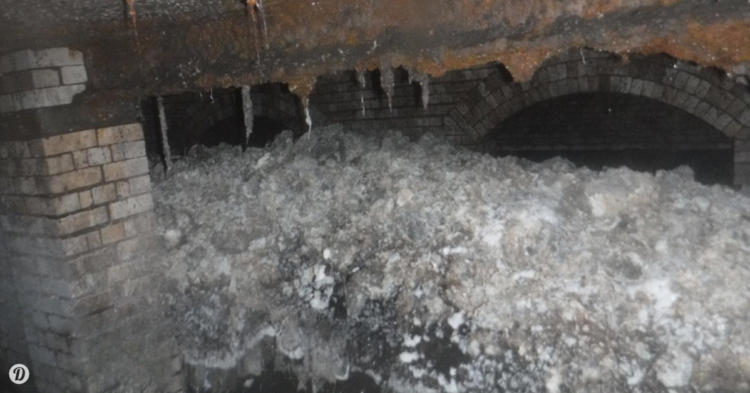Humans are gross. We are. You don’t even need to see someone’s browser history to know it. There’s evidence all around us, with just about everything we leave behind.
It’s getting harder and harder to ignore it, too. What we send out of sight and should stay out of mind is increasingly coming back to haunt us later. Often in larger, stinkier forms.
You know, it’s hard not to feel for sewer workers in general, but the ones in Britain that have to face off with a massive ‘fatberg’ must be beside themselves.

Even the Ninja Turtles wouldn’t want to battle such a thing. The mammoth, fatty clot was discovered lurking in the sewers beneath the quaint seaside town of Devon.
Now, a few brave British sewer divers have to deal with it.
The fatberg has been estimated to be about 64 meters (210 feet) long, about the same size as six double-decker buses.
Or a full seven meters more than the Leaning Tower of Pisa. It’s a monster made up of congealed fat from cooking oil, wet wipes, diapers, food waste, and just about anything sent down the drain or flushed down a toilet that shouldn’t be.
The area’s wastewater management service believes it will take two months for workers to fully break up this disgusting mass.

“It’s the largest discovered in our service history and will take our sewer team around eight weeks to dissect this monster in exceptionally challenging work conditions,” South West Water’s director of wastewater, Andrew Roantree, told The Independent
The question of how long this fatberg has been growing did come up.

Sidmouth Town councillor Paul Wright said “The question that sprung to my mind was when did they last check the sewers? It hasn’t grown overnight. It could be absolutely ancient. It could be the oldest fatberg as well as being so long. It’s quite incredible.”
Mind you, although the Devon fatberg is undeniably large, it’s far from the largest ever found in Britain.

That unfortunate title goes to a monstrous blockage found beneath the Whitechapel area in east London in 2017. At 250 meters long (820 feet), if stood on its end, it would have qualified as one of the 20 tallest structures in all of the U.K.
That nightmare weighed in at an estimated 130 tonnes that Thames Water said smelled “like rotting meat mixed with the odour of a smelly toilet.”

It took a mere nine weeks for workers to break up, and its pieces were sent to a recycling plant to be turned into renewable energy.
Well, except for one chunk, which went on display at the Museum of London, because who wouldn’t want to check out a stomach-churning blob of soggy waste.
Naturally, the country’s water management bodies are taking the opportunity to educate the public on how to stop contributing to fatbergs.
This tweet from South West Water puts it pretty succinctly: Don’t flush what shouldn’t be flushed, and don’t pour cooking oil down the sink.
As some Twitter users pointed out, cooking oil should be poured into a container that you can throw away later.

Or, if you prefer, some areas have companies that will take your congealed cooking oil for recycling into biodiesel. Much better than allowing it to block the sewers!
It’s also a reminder that things that claim to be “flushable” still aren’t meant to be flushed.

Sure, those so-called “flushable” wipes go down the toilet, but they don’t break up once they get to the sewers. That’s how these fatbergs start forming, and they’re a costly problem. Thames Water told the BBC that they spend about a million pounds ($1.278 million U.S.) a month breaking up fatbergs.
And even though fatbergs can be recycled into biodiesel, it’s not the most cost effective thing around.

That huge fatberg under London, all 820 feet of it, turned into about 10,000 liters of biodiesel, enough to run 350 London buses for one day.
















































